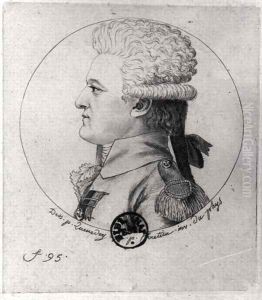Edme Quenedey Paintings
Edme Quenedey was a French artist known primarily for his work as an engraver and miniaturist. Born in 1756 in the region of Burgundy, France, Quenedey came from a family with a background in art; his father was also an engraver. He moved to Paris to further his art education and career, where he became a pupil of the renowned painter and engraver, Jean-Baptiste Le Prince.
Quenedey's style was influenced by the Neoclassical movement, which was prevalent during his time. This movement sought to emulate the arts of ancient Greece and Rome, and was characterized by its emphasis on simplicity, symmetry, and a sense of grandeur. Quenedey's engravings and miniatures often reflected these classical ideals and were marked by their fine detail and precision.
In Paris, Quenedey became associated with the intellectual and artistic circles of the day, and he was known to have created portraits of many notable figures of the French Enlightenment, including philosophers, writers, and politicians. His work was not limited to portraiture, however; he also produced genre scenes and illustrations for books, further showcasing his versatility as an artist.
Despite his successes, Quenedey's life was not without challenges. The French Revolution, which began in 1789, brought about a period of political and social upheaval that affected artists and their patronage. Quenedey, like many of his contemporaries, had to navigate these turbulent times while continuing to practice his art.
Quenedey's legacy is that of a skilled craftsman and artist who contributed to the rich tapestry of French art in the late 18th and early 19th centuries. His works can be found in various museums and private collections, where they continue to be appreciated for their elegance and historical value. Edme Quenedey died in 1830, leaving behind a body of work that remains of interest to art historians and collectors today.







